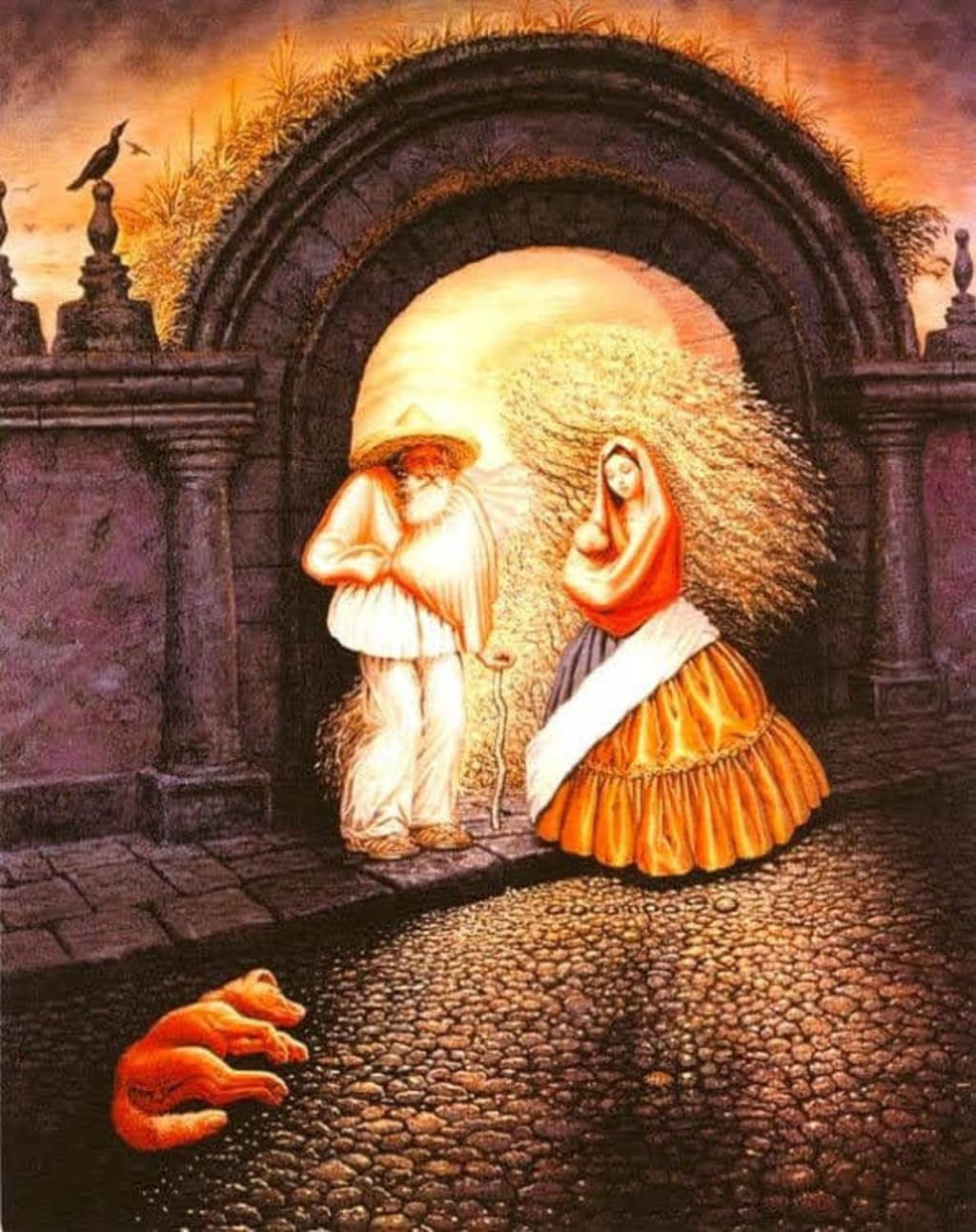
What is an Optical Illusion?
Optical Illusions can use color, light and patterns to create images that can be deceptive or misleading to our brains. The information gathered by the eye is processed by the brain, creating a perception that in reality, does not match the true image. Perception refers to the interpretation of what we take in through our eyes. Optical illusions occur because our brain is trying to interpret what we see and make sense of the world around us. Optical illusions simply trick our brains into seeing things which may or may not be real.
Optical illusions can fool or confuse our minds by using color, light, and patterns to generate visuals. The brain uses the information that the eye has collected to create a perception that does not correspond to the actual image. The term perception describes how we perceive the visual information we receive. Our brain tries to make sense of the world around us by interpreting what we see, which leads to optical illusions. Simply said, optical illusions deceive our brains into believing in things that may or may not exist.You can learn how your eyes actually function by going beyond the intriguing tales they are telling. You view the world the way you do because your eyes and brain constantly communicate with one another.
For instance, the layer in your eyes called the retina, which is responsible for creating visual images, really "sees" images that are reversed and upside down. Your brain turns the images around so that you perceive them inverted and backward. Each and every time. Yes, the original Photoshop genius resides in your head.
Your entire neurological system is also controlled by your brain. It doesn't always hold sway, despite what you would think. Sometimes your eyes can deceive your brain into perceiving things that aren't truly what they seem to be.
Since ancient times, people all over the world have been fascinated with optical illusions. Greek philosophers like Plato defined them as psychological and sensory tricks put on humans. By the 19th century, renowned cartoonist W.E. Hill had drawn a picture that was simultaneously two images, embracing the optical illusions phenomenon. Your vision led to the figure you observed. Either a little girl or an elderly woman was there.
Literal illusions, physiological illusions, and cognitive illusions are the three basic categories of visual deceptions. One aspect of all three forms of illusions is similar. The image that is presented to the brain is not what is perceived. Because of this, optical illusions are sometimes referred to as a "eye trick."
LITERAL OPTICAL ILLUSIONS
When the image you see differs from the images that make it up, it is said to be a literal illusion. For instance, Hill's illustration, which is actually two images that were carefully combined to appear as one fluid image, is a real illusion. Consider it a figure that can be reversed. In a literal illusion, your perception determines the outcome.

PSYCHOLOGICAL OPTICAL ILLUSIONS
Because they capitalize on the overstimulation of the brain's senses, these kinds of visual illusions are more complicated. The brain is confused by the amount of light, motion, color, depth, and size that the eye "sees." Physiological optical illusions are what give you the ability to view mind-bending things like impossible images and geometric illusions. A two-dimensional figure initially appears to be three-dimensional. That is because the brain reads it that way right away. The brain knows what the eye is actually seeing after additional research. The pictured object is not found in nature.

COGNITIVE OPTICAL ILLUSIONS
Because it is the most intricate mental trick the eye can pull, this particular illusion is the one that scientists and psychologists have spent the most time studying. These illusions, as opposed to other optical illusions, rely on the unconscious mind's associations between various objects. In other words, it is thought that what you see can reveal the depths of your thoughts. What your brain infers and knows about something that cannot be described is revealed via a cognitive optical illusion.

Also take a look at some unbelievable optical illusions in nature.








Comments
There are no comments for this story
Be the first to respond and start the conversation.